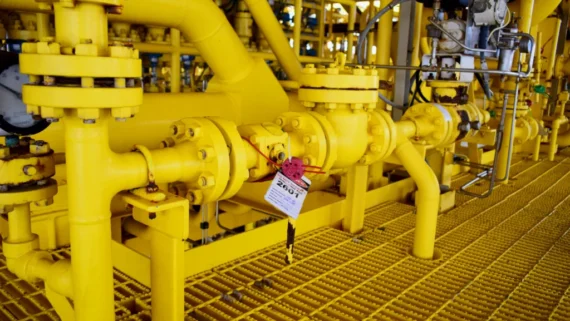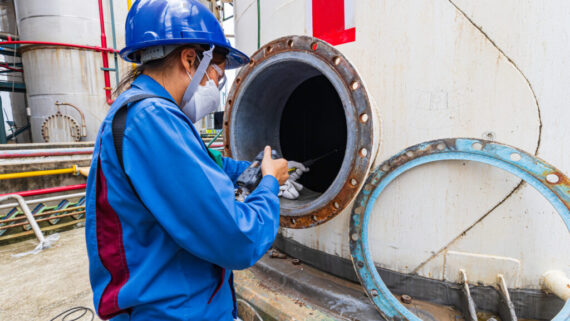Accident & Incident Investigation Training
Incident Investigation VR 6.0
Incident Investigation VR 6.0 -
Online Course Overview
This online course is one of the modules in the Leadership for Safety Excellence program. The content has been designed for municipal supervisors, but it can help anyone who is involved in health and safety management. The full list of modules in the program is as follows:
- Module 1: Supervisor’s Role
- Module 2: Hazard Identification, Assessment, and Control
- Module 3: Formal Workplace Inspections
- Module 4: Accident/Incident Investigation
Worksite accidents are the last thing an organization would want, but there is a duty to investigate and report them promptly when they occur. Accidents can cause shock and fear among workers and managers. However, they also provide a chance to gather vital information, which can be used to improve health and safety management in a company.
This Accident/Incident Investigation course has been developed for collaborators who are in charge of investigating accidents or incidents in workplaces. The course explains the purpose of accident/incident investigation, and the processes involved. The content also covers the differences between the two causes of accidents: immediate or direct causes, and underlying or root causes. Also, the course teaches how to determine corrective actions and recommendations, which will help prevent recurring accidents.

Traditionally, the field of occupational health & safety has focused on training the worker to avoid accidents. However, a different perspective is now being adopted, which focuses on making the whole organization responsible – managers, supervisors, technicians, etc. This course covers the relationships between different areas and roles in an organization, and how they can help prevent accidents or incidents.
After taking this course, you will be familiarized with the goals and benefits of a proper investigation when dealing with accidents or incidents. You will learn about the necessary preparations, the steps that must be followed, and how to distinguish between immediate and underlying causes. Finally, you will learn how to develop and apply corrective actions.
The following are some key topics covered by this accident/incident investigation training:
- What is the difference between accidents and incidents?
- Why should accidents and incidents be investigated?
- What should the investigation cover?
- Who should be in charge of the investigation?
- What causes accidents?
- Overview of the accident sequence model
- How to report an accident
- How to prepare for an investigation
- How to investigate an accident
A workplace accident does not happen on its own. There are always causes, and similar accidents may continue happening unless those causes are fixed. When an accident happens, finding someone to blame is a common human reaction, but this will rarely fix the issue. Accident investigation focuses on finding root causes, and giving permanent solutions that will prevent recurring accidents. A good investigation creates safer working conditions for everyone, while reducing further losses and legal consequences.

When an accident investigation is conducted properly, it tells you what happened and why. Accident investigation becomes an ongoing process that improves health and safety at the organizational level, and it goes beyond responding to a specific event. An effective investigation will answer the following questions:
- What happened exactly?
- What information and facts are available?
- Which are the causes of the incident?
- Are there any conditions, procedures or specific actions that are unsafe?
- Which corrective actions are required for the unsafe conditions/procedures/actions?
- Was due diligence observed? Is there any proof?
This course focuses on accidents that cause physical injury or material damage. However, even incidents that don’t have these consequences should be investigated to detect hazards. These “close calls” should be viewed as warnings, and they are excellent opportunities to identify workplace risks that were being missed, before a serious accident happens. When investigating accidents, the same principles apply for minor and serious events.
Course Presentation
This accident/incident investigation course includes narration, photos, graphics and activities to improve the learning experience.
Resources
The course includes a 43-page manual in PDF format, which can be downloaded and printed. This manual stays available after completing the course, and it provides several examples of accident/incident investigation forms, which can be used by participants in their investigations. These forms include:
- Occupational Health & Safety Hazardous Condition and Near Miss Report/Follow-Up
- Sample Workplace Inspection Directive
- Occupational Health & Safety Accident Report/Investigation Form
- Accident Investigation Process Map, with accompanying Incident Investigation Form
Accident Incident Investigation Training - Online Course Topics
Chapter 1: What are accidents and incidents?
This chapter defines the terms “accident” and “incident”, which are often used as synonyms. However, there are important differences between both concepts, and collaborators must be aware of them.
Chapter 2: Why investigate accidents?
The second chapter explains why companies should conduct an investigation when there is an accident or incident. This chapter also covers the benefits of accident investigation, legal implications, reporting requirements for various accident types, the Worker’s Compensation Act, and how to manage first aid records.
Chapter 3: What should be investigated?
An accident means there are underlying problems, even if it was a minor accident with nobody injured. This chapter describes what the investigation should cover, while introducing the concept of the accident pyramid.
Chapter 4: Who should investigate?
This chapter covers the legal aspects and obligations when investigating a workplace accident.
Chapter 5: How are accidents caused?
This chapter discusses common beliefs about the causes of accidents, while proposing a model that explains why they happen. There is no single explanation that covers all the possible causes of accidents.
Chapter 6: Accident Sequence Model
This chapter explains the Accident Sequence Model, an approach to visualize and interpret events that lead to an accident. The Accident Sequence Model has the following characteristics:
Accidents are viewed as the result of many variables, which interact with each other and the work environment.
The model analyzes the effects, immediate causes, underlying causes, and weak spots of the management system.
Chapter 7: Reporting Accidents
Accidents must be reported to supervisors, so they can start an investigation as soon as possible. This chapter discusses why workers do not always report accidents, and how to encourage them to do so.
Chapter 8: Preparing for an Accident Investigation
An effective accident investigation requires several preparations. This chapter covers those preparations, and the first steps to follow when an incident happens. The chapter also includes an Accident Directive sample.
Chapter 9: The Investigation Process
This chapter covers the four steps of a workplace accident investigation. It is important to note that these stages overlap, and they do not occur in a linear sequence:
- Gathering the facts
- Analysis and evaluation
- Documentation and sharing the findings
- Follow-up
Investigators will be given instructions on how to gather information at the site, how to interview witnesses, and how to analyze the background information. The chapter includes practice exercises, where participants can identify causes and recommend corrective actions. The content also includes a sample Occupational Health & Safety Accident Report/Investigation.
Chapter 10: Improving your Health and Safety System
When an accident happens, it means the organization must fix some aspect of its health and safety management. This chapter discusses how to use accident investigation results, to achieve permanent improvements in health and safety management.
Universally Compatible
 This course was created using standards that will allow playback on most internet capable devices with standard web browsing capabilities including Apple’s iTouch, iPad, and iPhone, as well as most other smart phones and tablets including those with Android and Windows operating systems.
This course was created using standards that will allow playback on most internet capable devices with standard web browsing capabilities including Apple’s iTouch, iPad, and iPhone, as well as most other smart phones and tablets including those with Android and Windows operating systems.
Duration
Average Completion Time
Completion times vary depending on the number of times the information is viewed prior to finishing the course. The average completion time is 3 hours.

Testing
Knowledge Assessment
Testing is conducted in this online course to reinforce the information presented. You are provided three opportunities to achieve a passing mark of 80% or greater.

Certificate
Certificate of Completion
Upon successful completion of this course, a certificate will be available to download and print. You can access your certificate through your online account.































